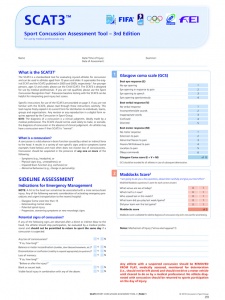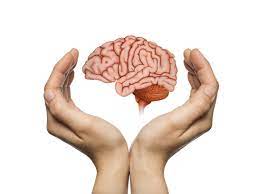Concussions are no joke, and it’s nice to see that people are finally beginning to take them seriously both on and off the field. The most dangerous part of a concussions is the chance of re injury, which means the most important piece to helping people with concussions is to stop them from a secondary impact. This is usually done by stopping players from playing for a while, but in order to do that the first step is recognizing the problem, which can be a challenge for many reasons. Such reasons include wanting to keep playing, dismissing it as a headache, or even ignoring the concussion to keep a player on the field. As concussions have become more recognized and dangerous, players and coaches need to change that mentality to one of a fast recovery. One of the best ways to get that first recognition and fast recovery in is by using the SCAT test.
The SCAT test is designed to be both user friendly and efficient, combining two of the key problematic factors regarding concussion diagnosis. Every coach, family member, and player should be able to use this tool effectively due to the functional layout and simplified instructions. By having these tools accessible to the public, concussions can be traded much more efficiently provided they are given the attention they deserve.
Below is an image of the first page of a SCAT-3 test as it would be administered in the field. One of the main strengths of the test besides its ease of use is the ability it has to cover all its bases. The test begins with important baseline information, such as level of consciousness and basic cognition, which are the most important indicators of a severe concussion. From there the test moves to a self-report, which can be both helpful and harmful depending on how it’s used. If this test were stand-alone it could lead to a series of issues, but the SCAT test instead uses it as a part of the baseline establishment, which allows for much more important information to be gathered by the observer. The test then goes into an in depth analysis of how the test taker performs on a variety of physical and cognitive tasks, with a score value assigned to each test. It may seem like a lot to the casual observer, but the level of detail combined with the ease of administration makes these tasks both manageable and effective at diagnosing a concussion. After the tests are done a concussion diagnosis can either be made or ruled out, and if a concussion is determined to exist the test outlines the next steps to take for seeking help.

There is still much work to be done regarding concussions and public opinion, but focusing on catching them before they can cause permanent damage is an important first step in recognizing the severity of concussions and moving towards a safer recovery period for people that live in high contact potential scenarios like contact sports or manual labor. In conclusion, ask your local coaches if they would be willing to have a copy of the newest SCAT test on hand, they never know how important it could be for their team!
